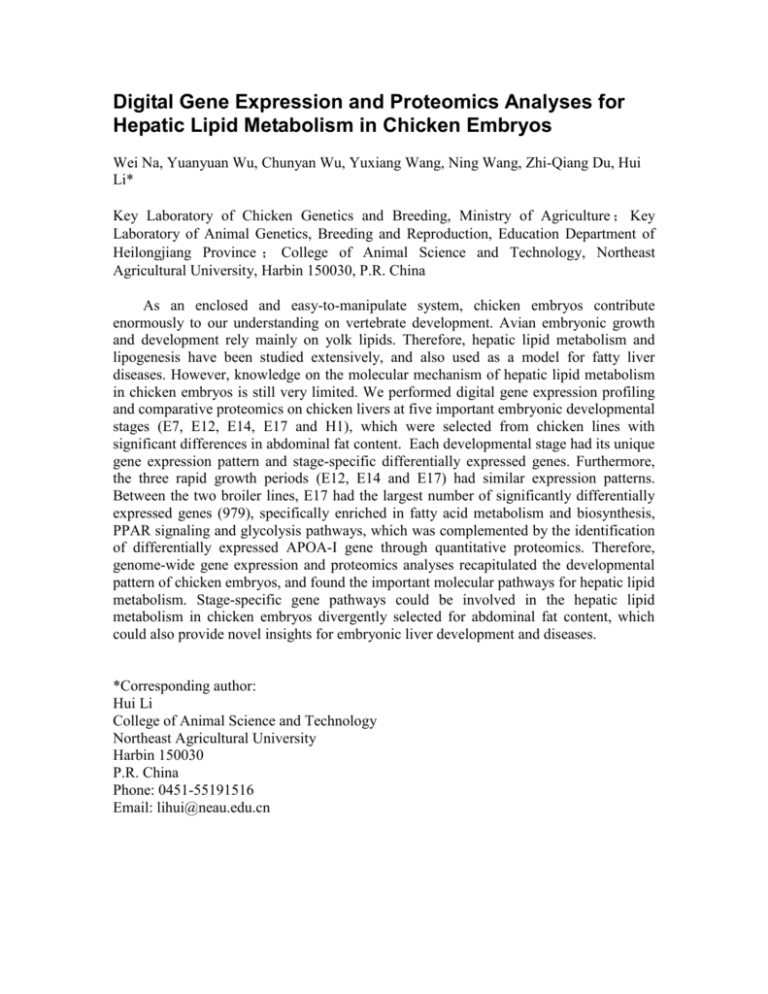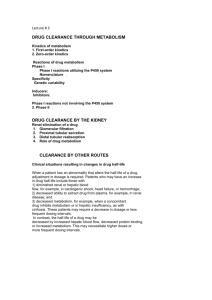Digital Gene Expression and Proteomics Analyses for Hepatic Lipid
advertisement

Digital Gene Expression and Proteomics Analyses for Hepatic Lipid Metabolism in Chicken Embryos Wei Na, Yuanyuan Wu, Chunyan Wu, Yuxiang Wang, Ning Wang, Zhi-Qiang Du, Hui Li* Key Laboratory of Chicken Genetics and Breeding, Ministry of Agriculture ; Key Laboratory of Animal Genetics, Breeding and Reproduction, Education Department of Heilongjiang Province ; College of Animal Science and Technology, Northeast Agricultural University, Harbin 150030, P.R. China As an enclosed and easy-to-manipulate system, chicken embryos contribute enormously to our understanding on vertebrate development. Avian embryonic growth and development rely mainly on yolk lipids. Therefore, hepatic lipid metabolism and lipogenesis have been studied extensively, and also used as a model for fatty liver diseases. However, knowledge on the molecular mechanism of hepatic lipid metabolism in chicken embryos is still very limited. We performed digital gene expression profiling and comparative proteomics on chicken livers at five important embryonic developmental stages (E7, E12, E14, E17 and H1), which were selected from chicken lines with significant differences in abdominal fat content. Each developmental stage had its unique gene expression pattern and stage-specific differentially expressed genes. Furthermore, the three rapid growth periods (E12, E14 and E17) had similar expression patterns. Between the two broiler lines, E17 had the largest number of significantly differentially expressed genes (979), specifically enriched in fatty acid metabolism and biosynthesis, PPAR signaling and glycolysis pathways, which was complemented by the identification of differentially expressed APOA-I gene through quantitative proteomics. Therefore, genome-wide gene expression and proteomics analyses recapitulated the developmental pattern of chicken embryos, and found the important molecular pathways for hepatic lipid metabolism. Stage-specific gene pathways could be involved in the hepatic lipid metabolism in chicken embryos divergently selected for abdominal fat content, which could also provide novel insights for embryonic liver development and diseases. *Corresponding author: Hui Li College of Animal Science and Technology Northeast Agricultural University Harbin 150030 P.R. China Phone: 0451-55191516 Email: lihui@neau.edu.cn





